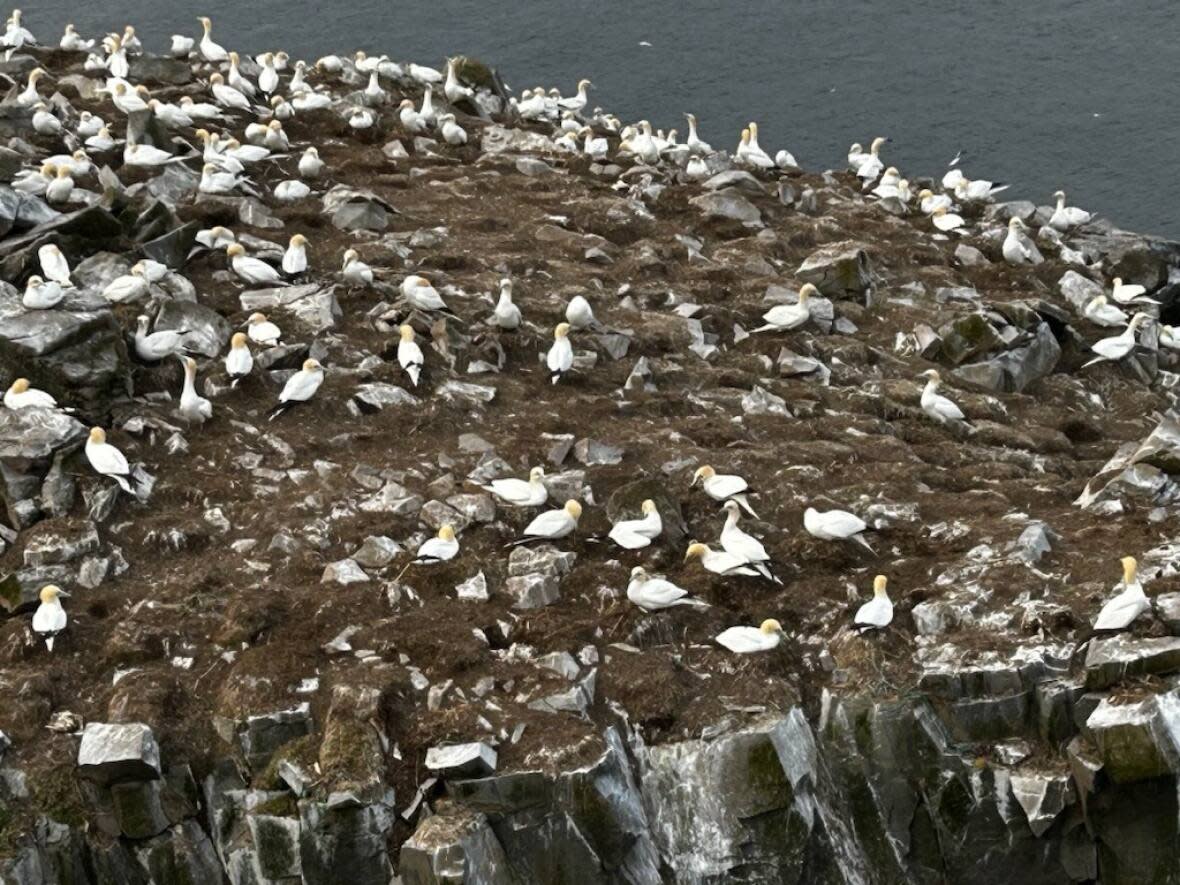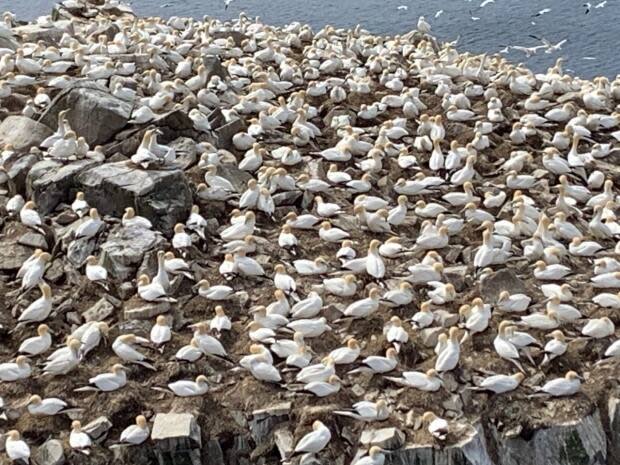Cape St. Mary's birds were decimated by last year's avian flu, and the reserve fears a repeat in 2023

The grounds of Cape St. Mary's Ecological Reserve would usually be teeming with gannets this time of year, but with their numbers devastated during an avian flu outbreak in 2022, seabird biologist Bill Montevecchi is raising the alarm.
Located on the southern end of the Avalon Peninsula, the reserve is home to thousands of birds, including gannets as well as razorbills, kittiwakes, cormorants and turrs. But the numbers are way down this year, said Montevecchi earlier this week.
"I'm just taking my first look of the year and there's just a tremendous amount of brown space there where there should be breeding gannets," he said.
"This is repercussion from all that mortality in 2022."
He's not sure how the breeding season will be affected or whether there will be another outbreak.
Last year, park interpretation technician Chris Mooney started taking regular photos of the scene and capturing the number of dead birds. His photos highlight the impact the outbreak had on the population.
"I started taking weekly pictures from the same spot. And from May the third last year to May the third this year, it's unbelievable, the difference," he said.
"You can start to see, you can see every single time, from when the bird flu struck last year. You could see every single day how many dead birds were there."
Mooney said he's continuing the practice and he hopes there isn't a repeat of last year.

Fears of avian flu repeat
Montevecchi said Newfoundland and Labrador isn't the only area where these birds were hit, listing off the North Atlantic, Iceland, Norway and the United Kingdom.
He estimates that the reserve's bird population is typically between 30,000 to 35,000, but after last year's devastation from the Avian flu, that number could be around 20,000.
One of Montevecchi's students just finished his honours paper on the breeding success of the birds last year, he said, and the results were startling.
"Last year it was devastating, the lowest ever, and we started measuring it in the 1970s," said Montevecchi.
The mass deaths of 2022 are having a visible impact this year, besides the missing birds. Typically, the gannet's first breeding season is around the ages of five and six, Montevecchi said, but with less competition, gannets this year are breeding around the ages of four and five.
Besides the avian flu outbreak, he pointed to the high water temperature in 2022 as a factor that hurt the population, as birds had to work harder to get food for themselves and their offspring.
"They've maybe got a virus, they can tolerate it, but then you put that extra stress on them and that's when our mortality peaked," said Montevecchi.
There have been recent reports of dead birds found by a fisherman 20 kilometre off St. Brides, Montevecchi said, which is worrying because last year's outbreak started with just a few cases.
Gannets are known for their steely blue eyes, but Montevecchi and his students have spotted an alarming feature: gannets with black eyes, which he attributes to a neurological virus.
A recent study published by scientific online archive BioRxiv in May suggested that the presence of black irises could be the result of the birds surviving a previous infection.


